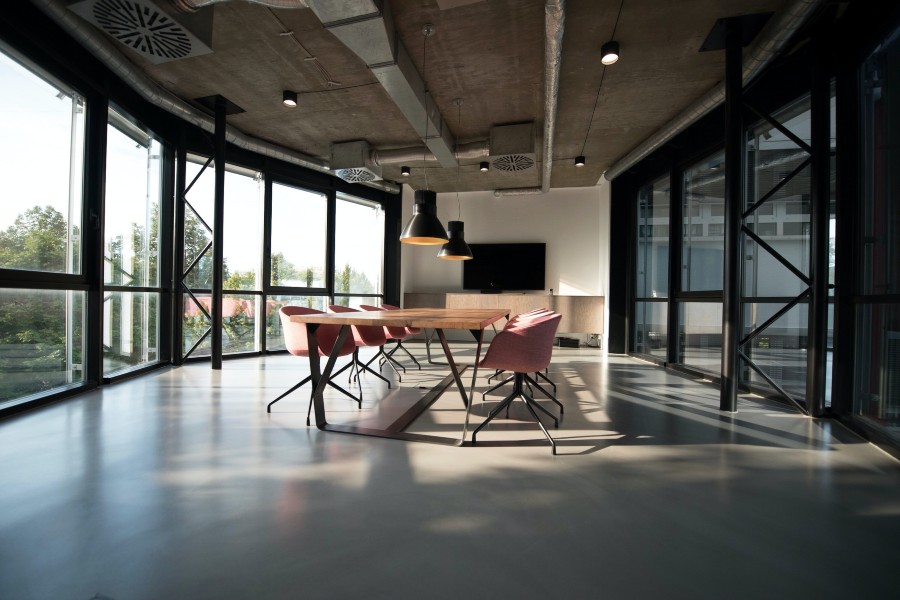
In today’s rapidly evolving business landscape, the traditional paradigms of productivity and collaboration are undergoing a profound transformation.
The advent of technology, changing workforce demographics, and the lessons learned from the COVID-19 pandemic have all converged to usher in a new era of workplace innovation. This article delves into the concept of Strategic Workplace Innovation, exploring how it redefines the way we approach productivity and collaboration in contemporary organizations.
Unlocking the Power of Flexibility
Strategic Workplace Innovation is all about embracing flexibility. Gone are the days when employees were tethered to their desks for eight hours a day. Instead, organizations are realizing the potential of remote and hybrid work models. This shift not only allows employees to tailor their work environments to their preferences but also taps into a global talent pool, enabling companies to harness diverse skills and perspectives.
Moreover, flexible workplaces leverage technology to optimize productivity. Cloud-based collaboration tools, project management platforms, and artificial intelligence-driven insights enable teams to work seamlessly across geographical boundaries. With the right technology in place, employees can collaborate on projects, share information, and make data-driven decisions in real time. This fusion of flexibility and technology empowers organizations to adapt swiftly to changing market dynamics, fostering a more agile and responsive work culture.
Fostering a Culture of Innovation
Strategic Workplace Innovation also places a premium on fostering a culture of innovation within organizations. It recognizes that true productivity isn’t just about getting more done in less time; it’s about doing the right things better. To achieve this, companies are reimagining their workspaces, transforming them into dynamic hubs of creativity and collaboration.
This cultural shift often involves creating spaces for brainstorming, experimentation, and cross-functional interactions. Modern offices incorporate open-plan designs, breakout areas, and collaborative zones where employees can brainstorm ideas and engage in spontaneous discussions. Additionally, organizations are investing in continuous learning and development, encouraging employees to acquire new skills and stay ahead of industry trends. By nurturing a culture of innovation, Strategic Workplace Innovation drives not only productivity but also a competitive edge in a rapidly changing marketplace.
Balancing Well-being and Performance
One of the most significant aspects of Strategic Workplace Innovation is its focus on employee well-being. This approach recognizes that a healthy, motivated workforce is a more productive one. Organizations are investing in initiatives to enhance employee well-being, which includes physical, mental, and emotional health.
This can manifest in various ways, such as flexible working hours, wellness programs, and mental health support services. By prioritizing well-being, organizations reduce burnout and absenteeism while improving overall job satisfaction and engagement. In turn, this leads to increased productivity and collaboration, as employees feel valued and motivated to contribute their best to the organization’s success.
Desk Sharing: Maximizing Space Efficiency
Do you want the broader landscape of Strategic Workplace Innovation? Desk sharing has emerged as a critical component to cut down on desk space and enhance collaboration. The concept of desk sharing challenges the traditional notion of assigned desks for each employee, promoting a more flexible approach. Instead of having designated workstations, employees reserve desks as needed, based on their daily requirements and schedules. This approach not only optimizes office space but also encourages employees to interact with different colleagues regularly.
Desk sharing dovetails perfectly with the broader themes of flexibility and collaboration in the modern workplace. It allows organizations to reduce their real estate footprint, saving costs on office space, and redirecting those resources into more innovation-driven initiatives. By implementing desk-sharing policies and providing the necessary technology support for reservation systems and desk booking, companies can create a dynamic work environment that enhances both productivity and collaboration. This approach aligns with the principles of Strategic Workplace Innovation, where the emphasis is on adaptability, creativity, and employee well-being, ultimately leading to a more agile and competitive organization.
Driving Environmental Responsibility
Strategic Workplace Innovation also integrates sustainability into the fabric of modern organizations. As companies increasingly recognize the importance of reducing their environmental footprint, the workplace becomes a vital arena for change. This entails incorporating eco-friendly practices and technologies into office spaces, from energy-efficient lighting and HVAC systems to the use of recycled materials in office furniture and fixtures.
Furthermore, the adoption of remote and flexible work models can significantly cut down on commuting, reducing carbon emissions and traffic congestion. By embracing sustainability in the workplace, organizations not only demonstrate their commitment to environmental responsibility but also attract environmentally conscious talent and customers. This sustainability-driven approach harmonizes with the broader goals of enhancing productivity and collaboration by fostering a sense of purpose and shared values among employees, who are often motivated by a commitment to a greener future.
Enhancing Performance through Insights

In the era of Strategic Workplace Innovation, data-driven decision-making takes center stage. Organizations are leveraging technology to collect and analyze data on various aspects of their workplace, from employee performance metrics to space utilization patterns. These insights help leaders make informed choices about resource allocation, office design, and work processes.
For instance, data analytics can reveal which workspaces are most frequently used, enabling organizations to optimize office layouts for maximum efficiency. It can also provide insights into team collaboration patterns, allowing for adjustments that enhance teamwork and productivity. By harnessing the power of data, organizations can continuously refine their workplace strategies, ensuring that productivity and collaboration remain at the forefront of their goals. Data-driven decision-making aligns seamlessly with the principles of Strategic Workplace Innovation, as it empowers organizations to adapt and evolve in response to changing circumstances, market dynamics, and employee needs.
In conclusion, Strategic Workplace Innovation represents a holistic approach to redefining productivity and collaboration in today’s dynamic business landscape. From embracing flexibility through remote work and desk sharing to fostering a culture of innovation, prioritizing employee well-being, and integrating sustainability and data-driven decision-making, modern organizations are evolving to meet the demands of the future. By embracing these principles, companies can not only enhance their productivity and collaboration but also position themselves as forward-thinking, adaptable, and competitive players in an ever-changing world. As the workplace continues to evolve, those who embrace Strategic Workplace Innovation will undoubtedly lead the way toward a more productive, collaborative, and sustainable future.
- The Ultimate Guide To Customizing Your Cubicle Partition For Comfort And Style
- Eco-Friendly Cubicle Partitions: Sustainable Office Design Ideas
- Sponsored Love: Luther Never Too Much In Harlem And At The Beacon NY
- FDA’s Concerns With Unapproved GLP-1 Drugs Used For Weight Loss From Harlem To Hawaii
- Two-Thousand Turkeys To Be Distributed By Anti-Poverty Nonprofit Oyate Group From Harlem To Hollis
Become a Harlem Insider!
By submitting this form, you are consenting to receive marketing emails from: . You can revoke your consent to receive emails at any time by using the SafeUnsubscribe® link, found at the bottom of every email. Emails are serviced by Constant Contact










It seems to me that it’s very cool that companies do this. the team must be united so that the team can achieve the best and high-quality results. the more comfortable employees are at work (working conditions, even desks), the more effective their work will be, because they will have the mood for it and they will want to work. In general, communication in the company is very important, because people are a social being, and vice versa, it’s cool that such coworking is being created. And if everything is also done with taste and design thought out, then all the more employees will be happy to come to work, and not come with reluctance.